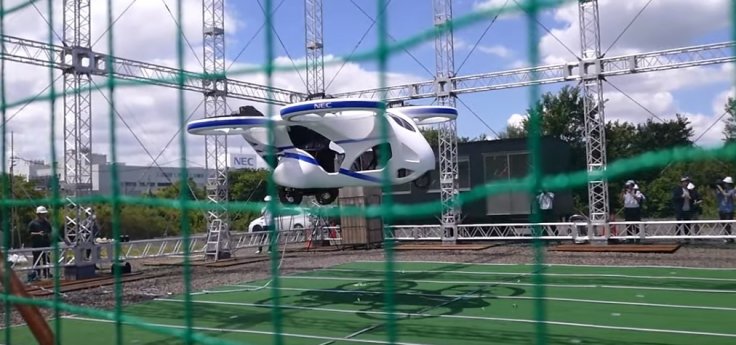
NEC Corporation, a Japanese electronics manufacturer has tested a prototype flying car on Monday, August 5 and it successfully hovered in the skies for more than a minute. The car is about the size of an auto-rickshaw and it is equipped with four horizontal propellers. During the test flight, the flying car reached an altitude of more than ten feet and experts believe that this is the first step from Japan to emerge as a global leader in flying car production that is expected to revolutionize computation in the near future.
After the test flight, NEC officials revealed that these flying cars are designed to make deliveries on unmanned flights. The Japanese government is apparently planning to use flying cars to transport goods by 2023, and they expect the introduction of flying cars in the commercial transport sector by 2030.
Even though the flying car has successfully passed the test launch, experts believe that it has a number of kinks to work out that includes battery life, safety, and regulation.
As Japan is busy pouring millions in this sector, Airbus, a European aeronautical product manufacturer is aiming to launch its commercial version of a flying car named Alpha One by 2020. This self-flying air taxi was recently tested, and it too hovered in the sky for more than a minute before a safe landing.
Airbus is developing this self-flying car as a part of Project Vahana. Experts at Airbus are noa planning to guide the air taxi from dedicated point A to point B, so that it can soon be used for commercial traveling purposes.
The move from NEC Corporation and Airbus is widely considered the latest development in creating autonomous flying vehicles, and if these vehicles pass security standards, the future will be ruled by such flying vessels which people have only seen in Hollywood movies.









